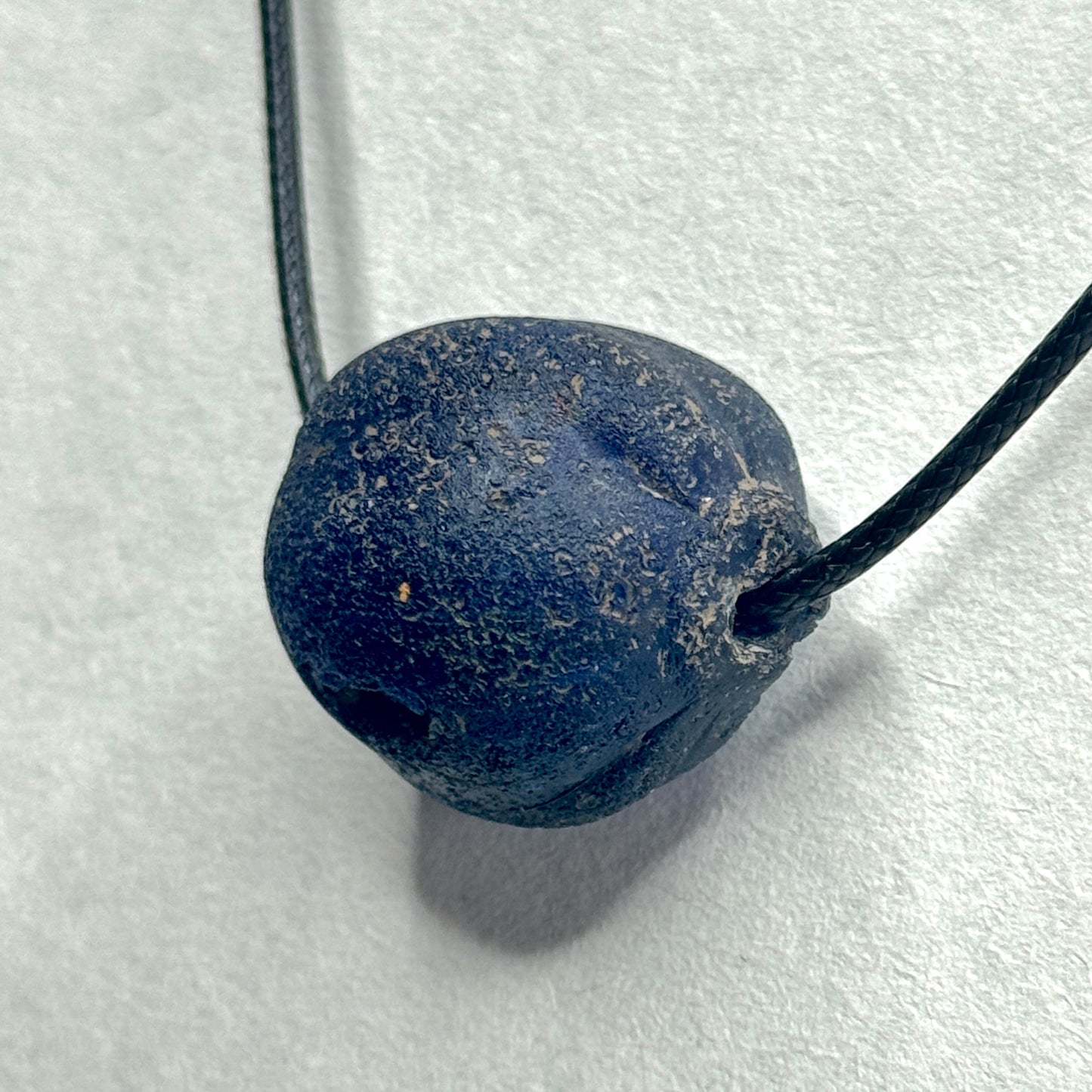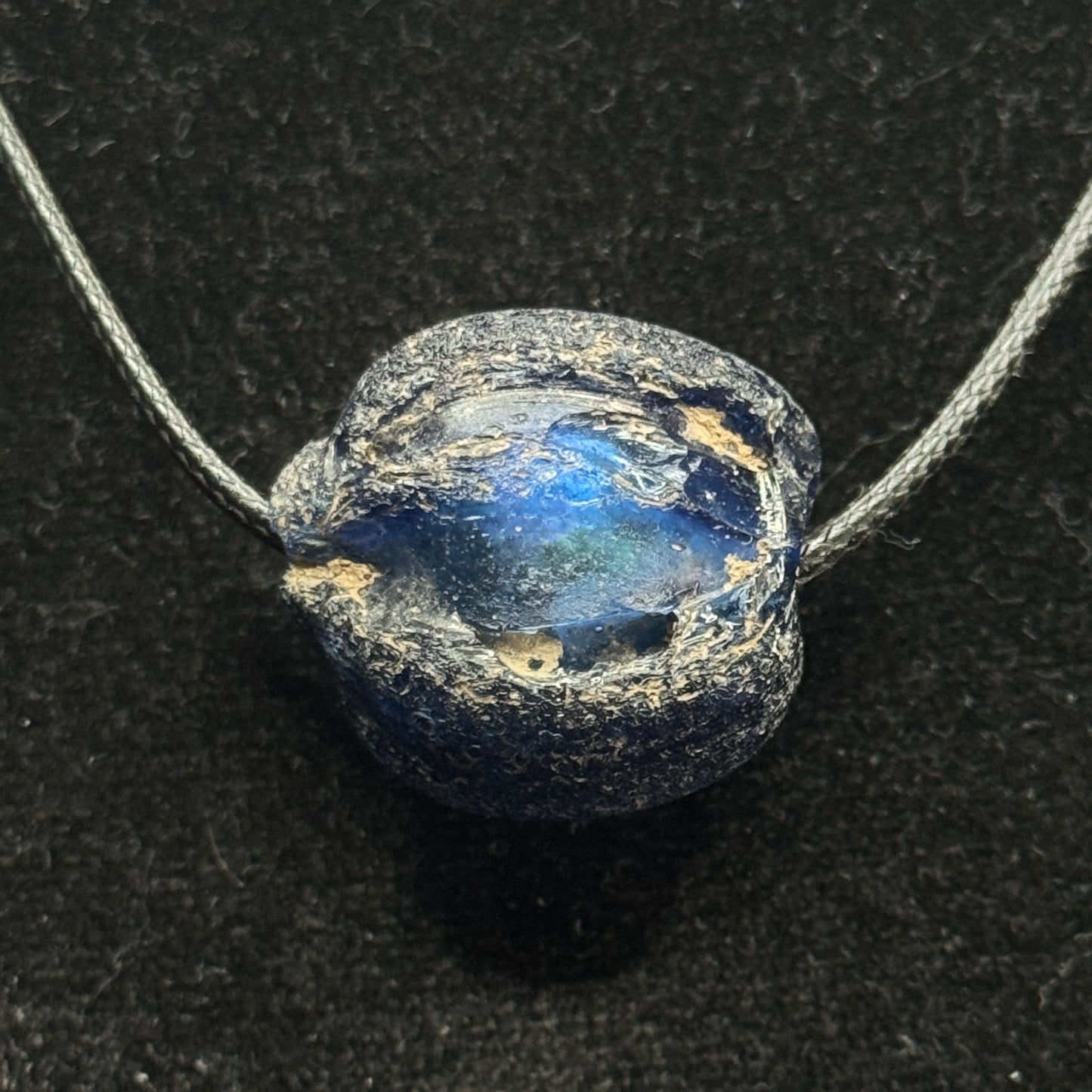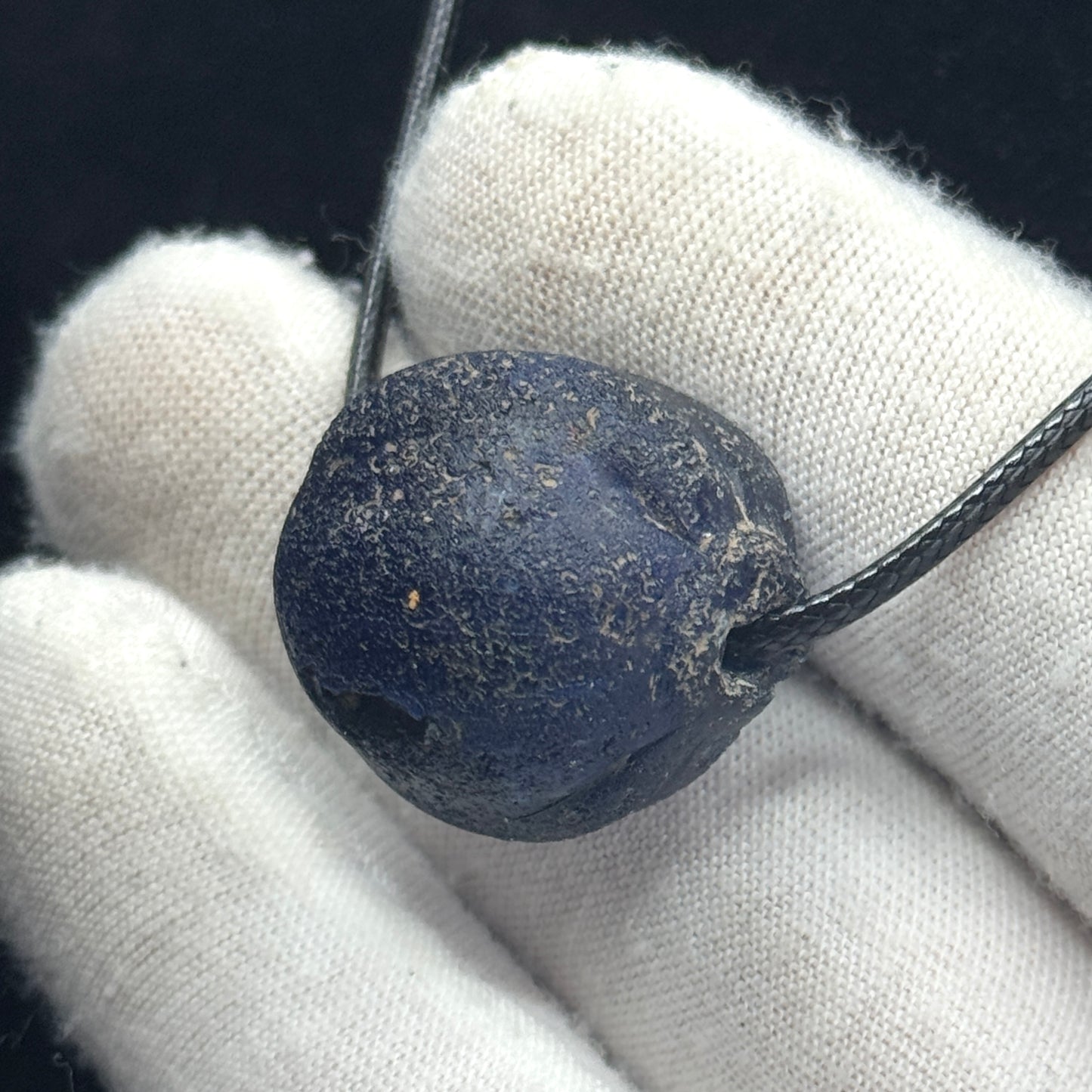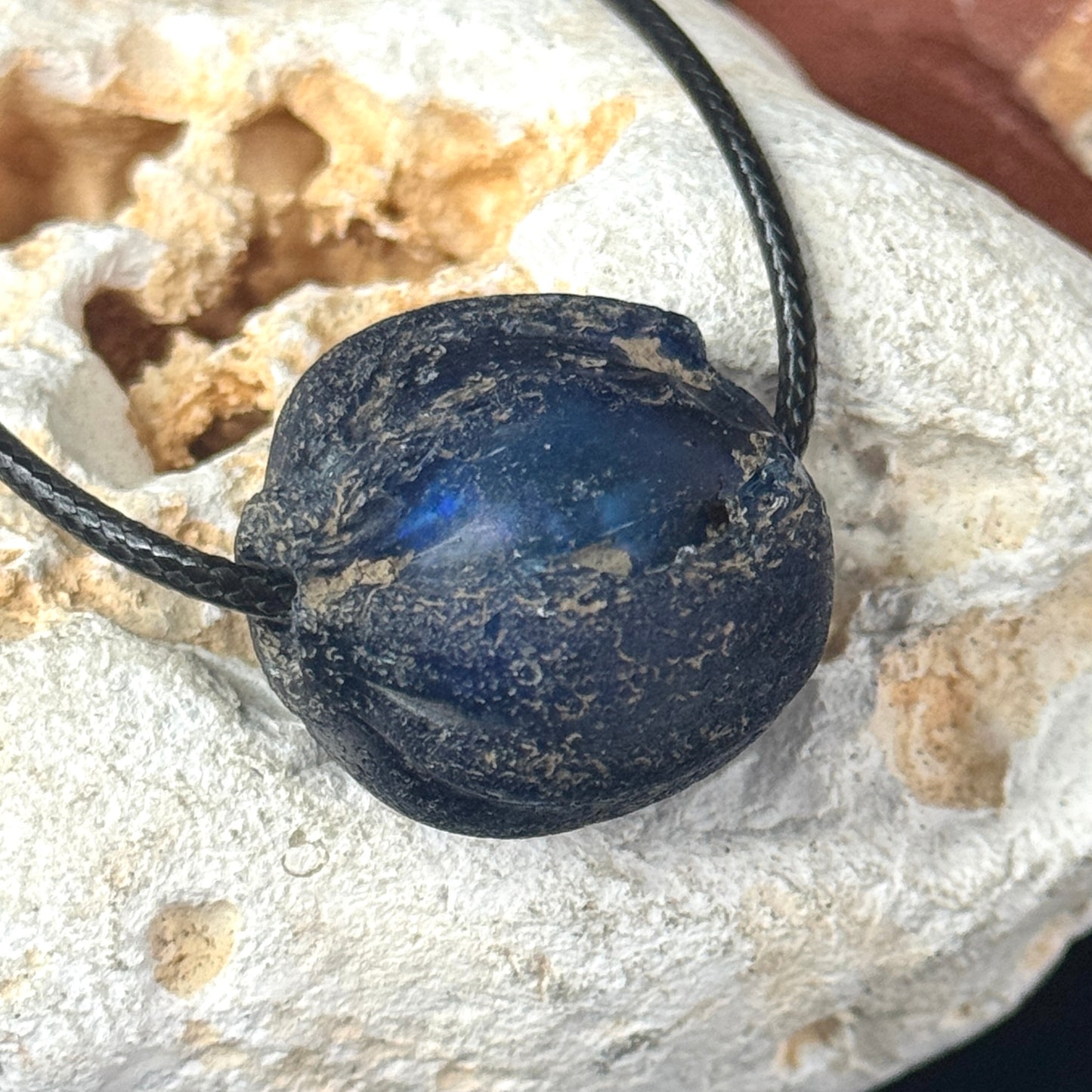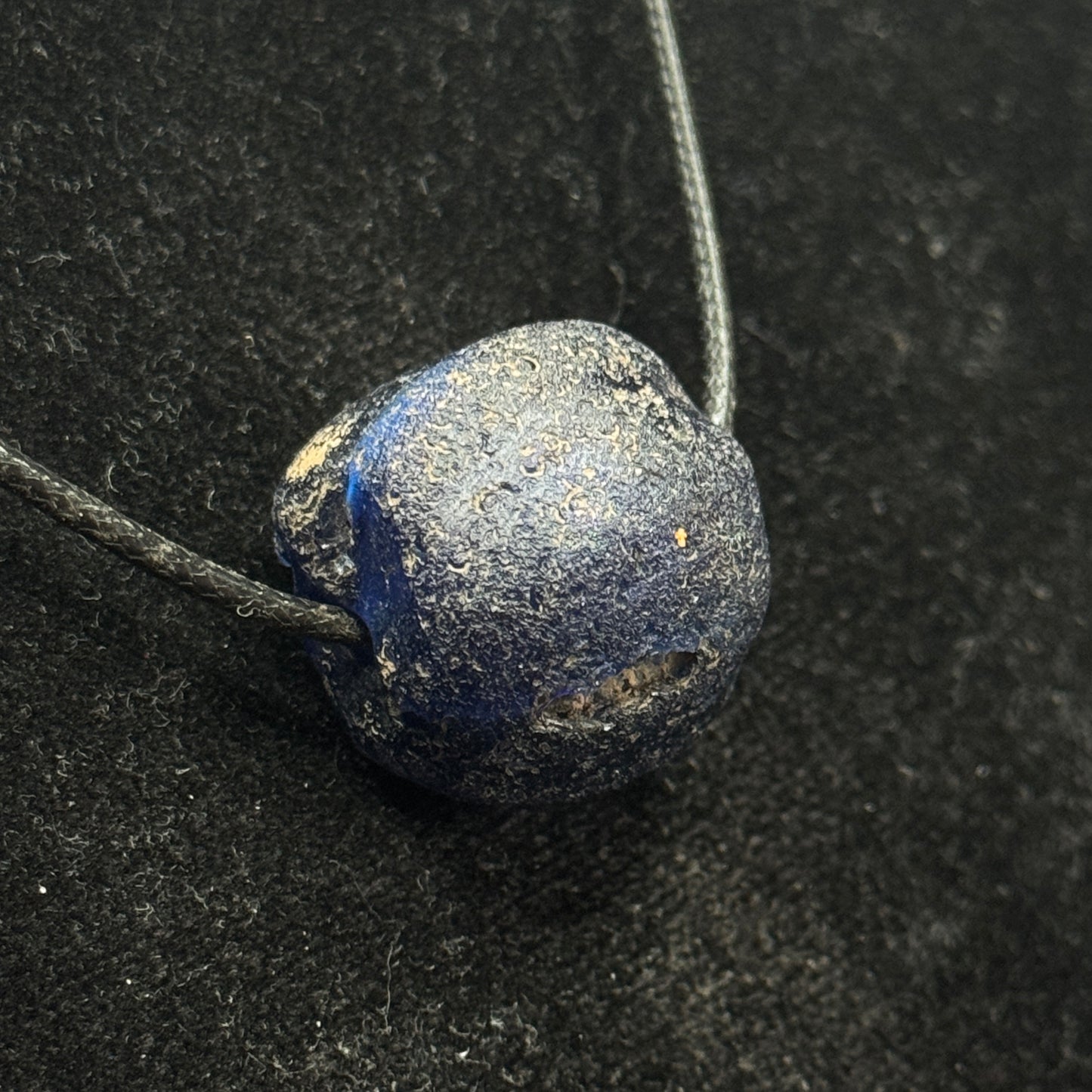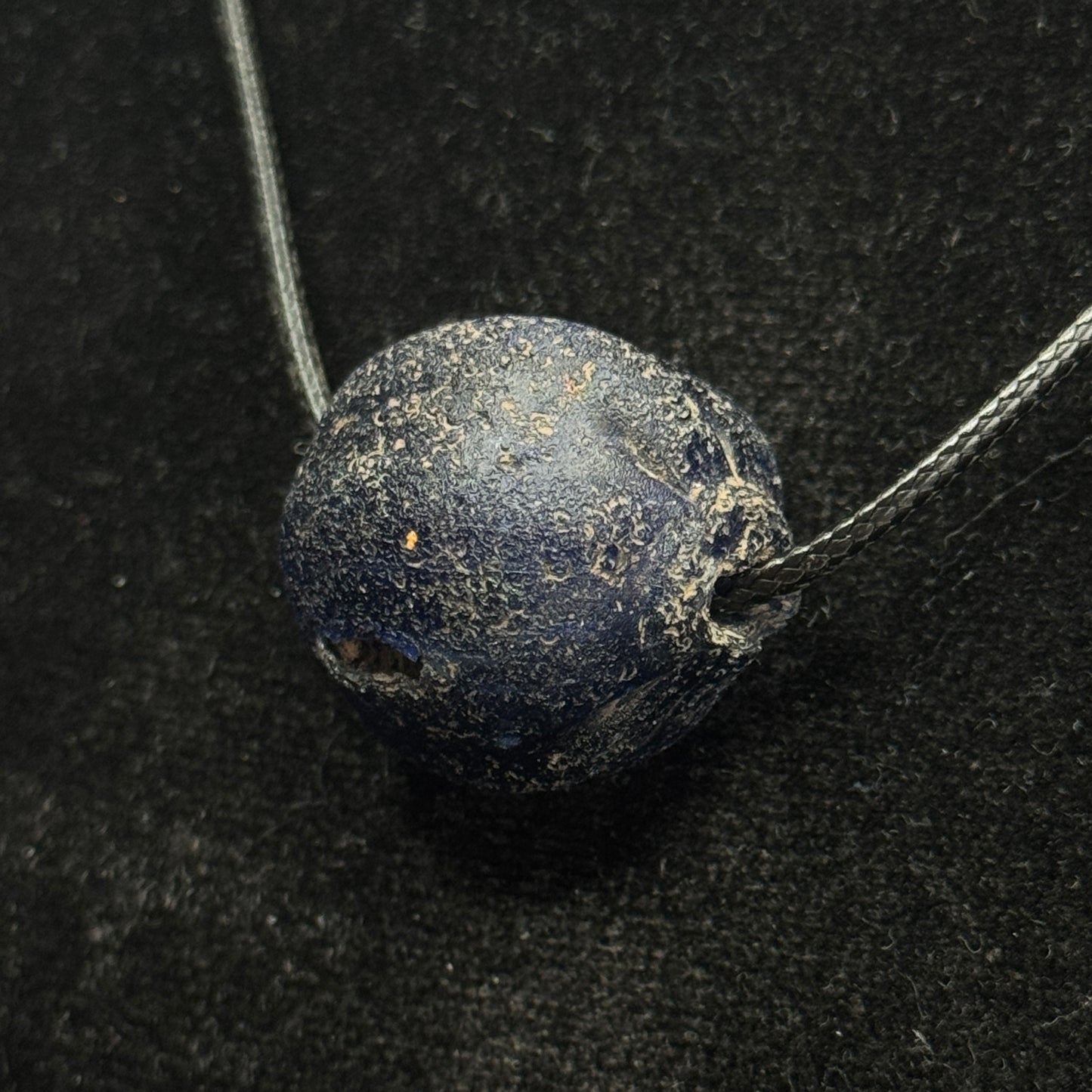My Store
Ancient Roman Pomegranate Cobalt Blue Glass Bead (200 B.C. - 50 A.D.)
Ancient Roman Pomegranate Cobalt Blue Glass Bead (200 B.C. - 50 A.D.)
Couldn't load pickup availability
Ancient Roman Cobalt Blue Glass Pomegranate Bead Necklace (200 B.C. – 50 A.D.)
Period:
Late Roman Republic to Early Roman Empire, circa 200 B.C. – 50 A.D.
Description:
This extraordinary necklace features an authentic Ancient Roman glass bead, exquisitely crafted over 2,000 years ago and shaped in the form of a pomegranate — a potent ancient symbol of fertility, abundance, and eternal life. Formed from deep cobalt-blue glass, the bead encapsulates the brilliance of Roman craftsmanship and their mastery of colour and form.
Inside the hollow glass body rest tiny ceramic seed beads, which gently rattle when moved — a mesmerising detail that demonstrates the Roman artisan’s ingenuity, playfulness, and celebration of life and nature. The surface retains traces of burial and age, creating a captivating interplay between the ancient patina and the glass’s original lustre.
Weighing approximately 10 grams and measuring around 2.9 cm, this substantial bead has been carefully mounted to preserve its ancient integrity while allowing it to be worn as a striking statement piece.
Dimensions:
Length of Bead: Approx. 2.9 cm
Weight: Approx. 10 grams
Cord: Adjustable black cord
Provenance:
From a documented private collection of Roman antiquities. Its authenticity has been confirmed by experts and is accompanied by certification of age and origin.
A Unique Collectible:
The inclusion of ceramic “seeds” within the bead makes this a rare and exceptionally imaginative creation — a tangible reflection of Roman artistry and their appreciation for everyday beauty. Both decorative and symbolic, this piece stands as a remarkable testament to the creative spirit of the ancient world.
Certification:
Accompanied by a certificate of authenticity confirming its Roman origin and age.
Please Note:
As with all ancient glass, this piece should be handled with care to preserve its condition and historical integrity.
Share
